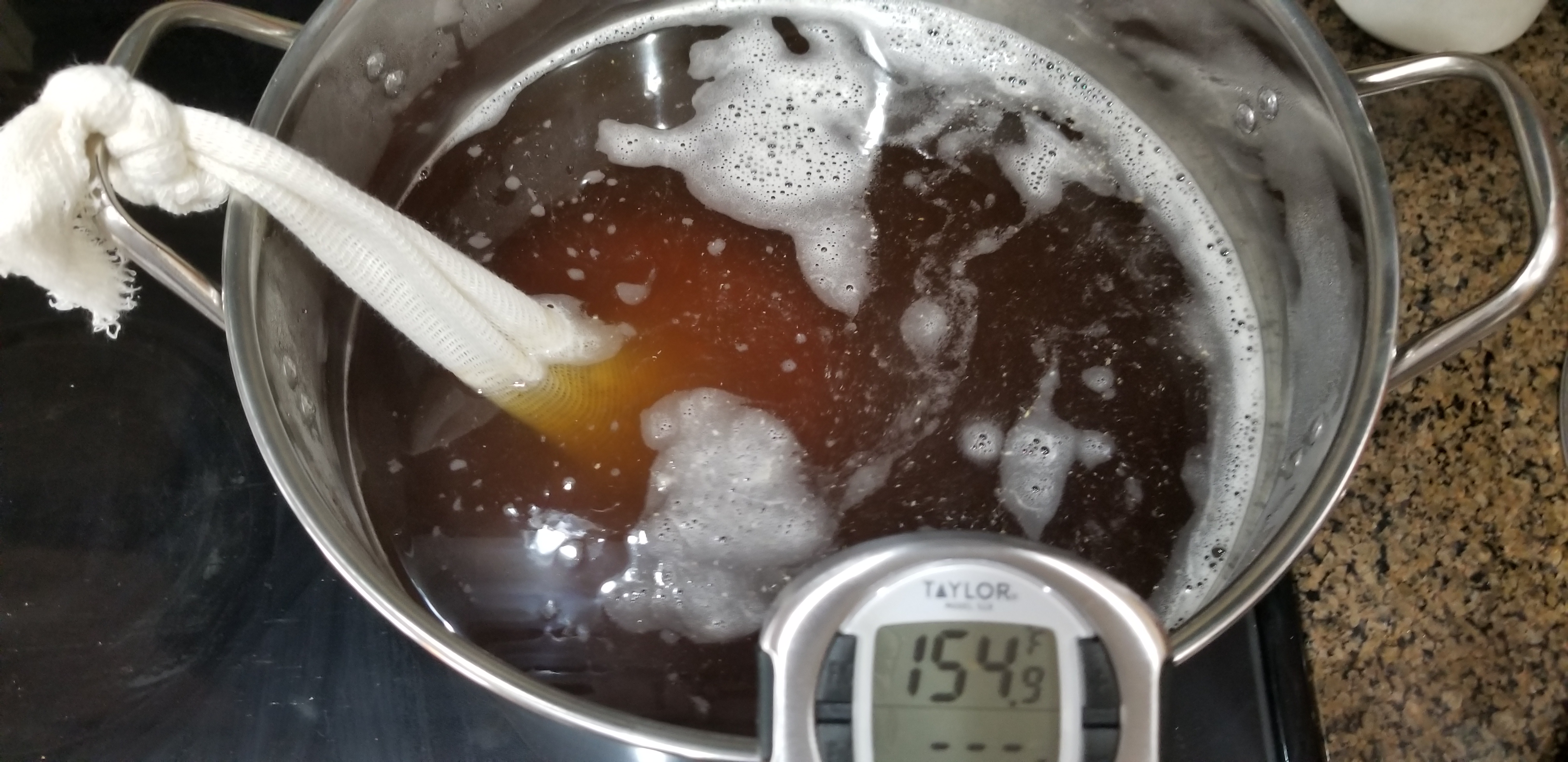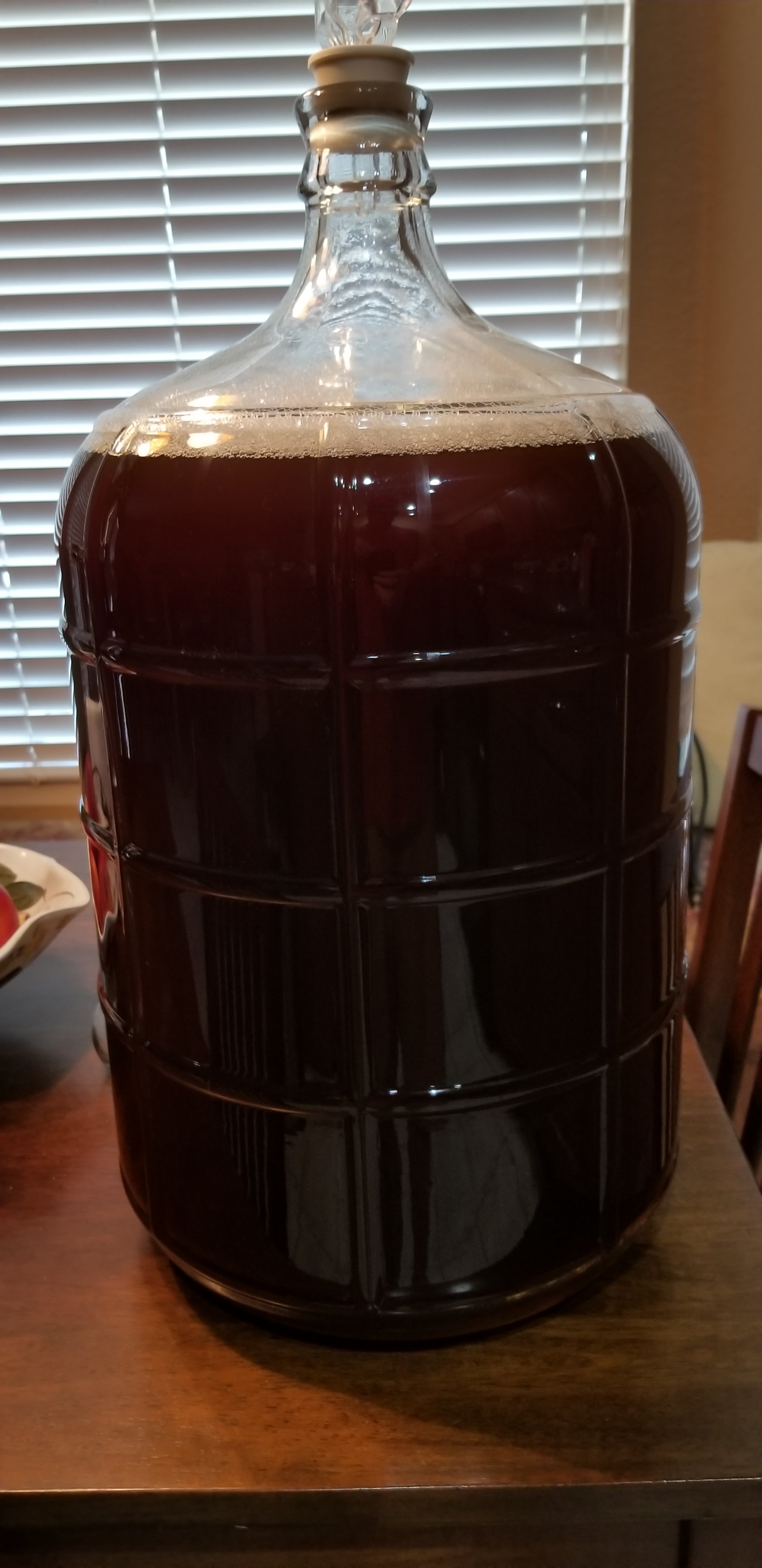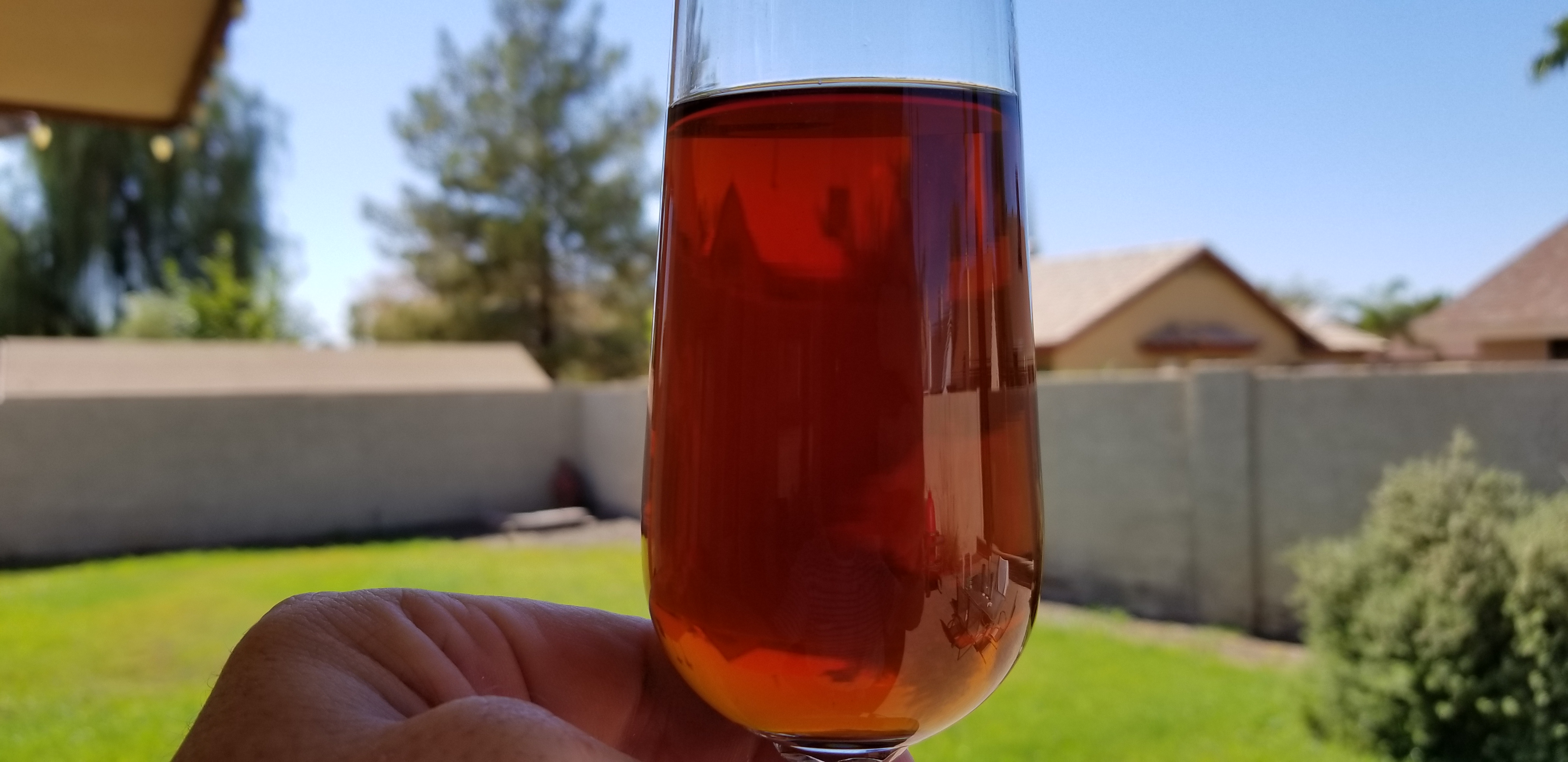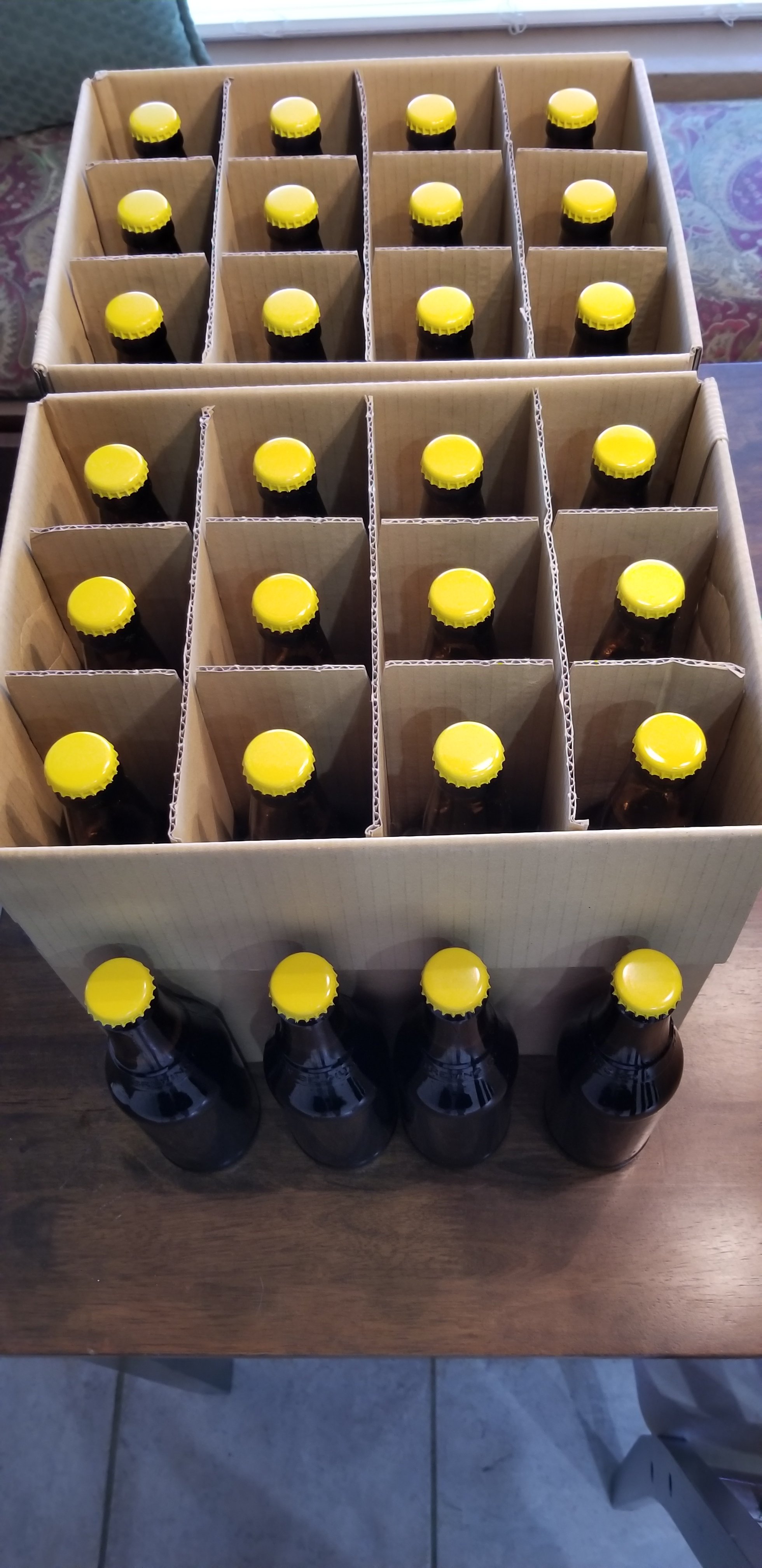- Joined
- Aug 18, 2018
- Messages
- 56
- Reaction score
- 15
My first brew day was Aug 18. Started with a Fat Tyre since its my favorite. It went really well. Cooking it was the easy part, waiting for the finished product is tough. Beer fermented at 68 Deg. in the fermentation chamber (mini frig with thermostat control). The test bucket was a little smaller than the fermentation bucket, so I had to take the saws all to the can dispenser and shelf on the refrig door to get it to fit. It took 20 hours for the fermentation to start which started to worry me. After a week I started the secondary fermentation. Cold crashed for another week. Dropped the temperature down to 60F for 6 days and one day at 54F.


Went ahead and bottled yesterday. The clarity came out better than I thought it would. It has more of a kick to it than fat tire and is a little darker but taste great. One or two weeks in the bottles to carbonate and then it will be good to drink. The alcohol content ended up being 4.8%. I racked 268 ounces.




Went ahead and bottled yesterday. The clarity came out better than I thought it would. It has more of a kick to it than fat tire and is a little darker but taste great. One or two weeks in the bottles to carbonate and then it will be good to drink. The alcohol content ended up being 4.8%. I racked 268 ounces.
























![Craft A Brew - Safale BE-256 Yeast - Fermentis - Belgian Ale Dry Yeast - For Belgian & Strong Ales - Ingredients for Home Brewing - Beer Making Supplies - [3 Pack]](https://m.media-amazon.com/images/I/51bcKEwQmWL._SL500_.jpg)


































